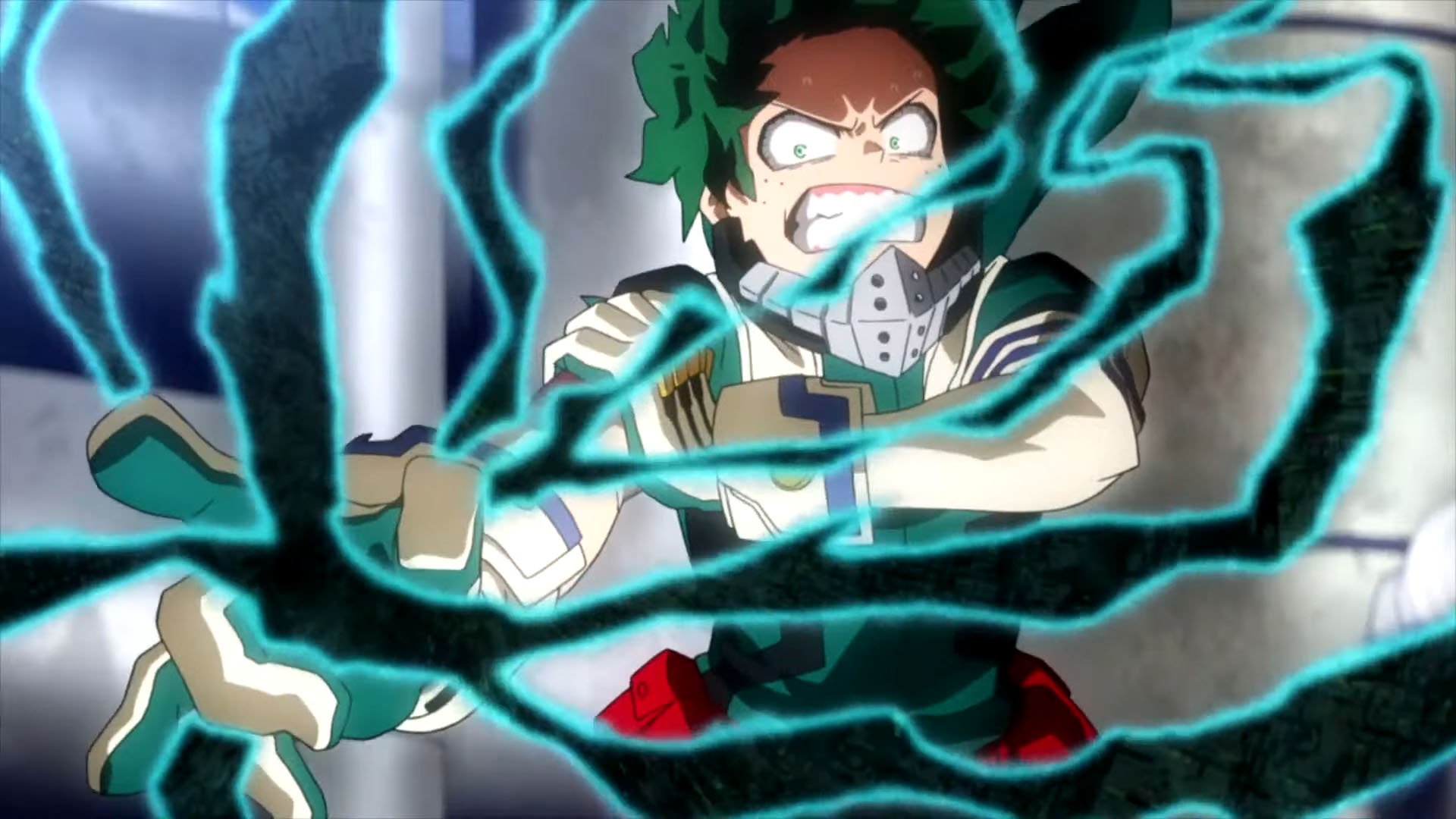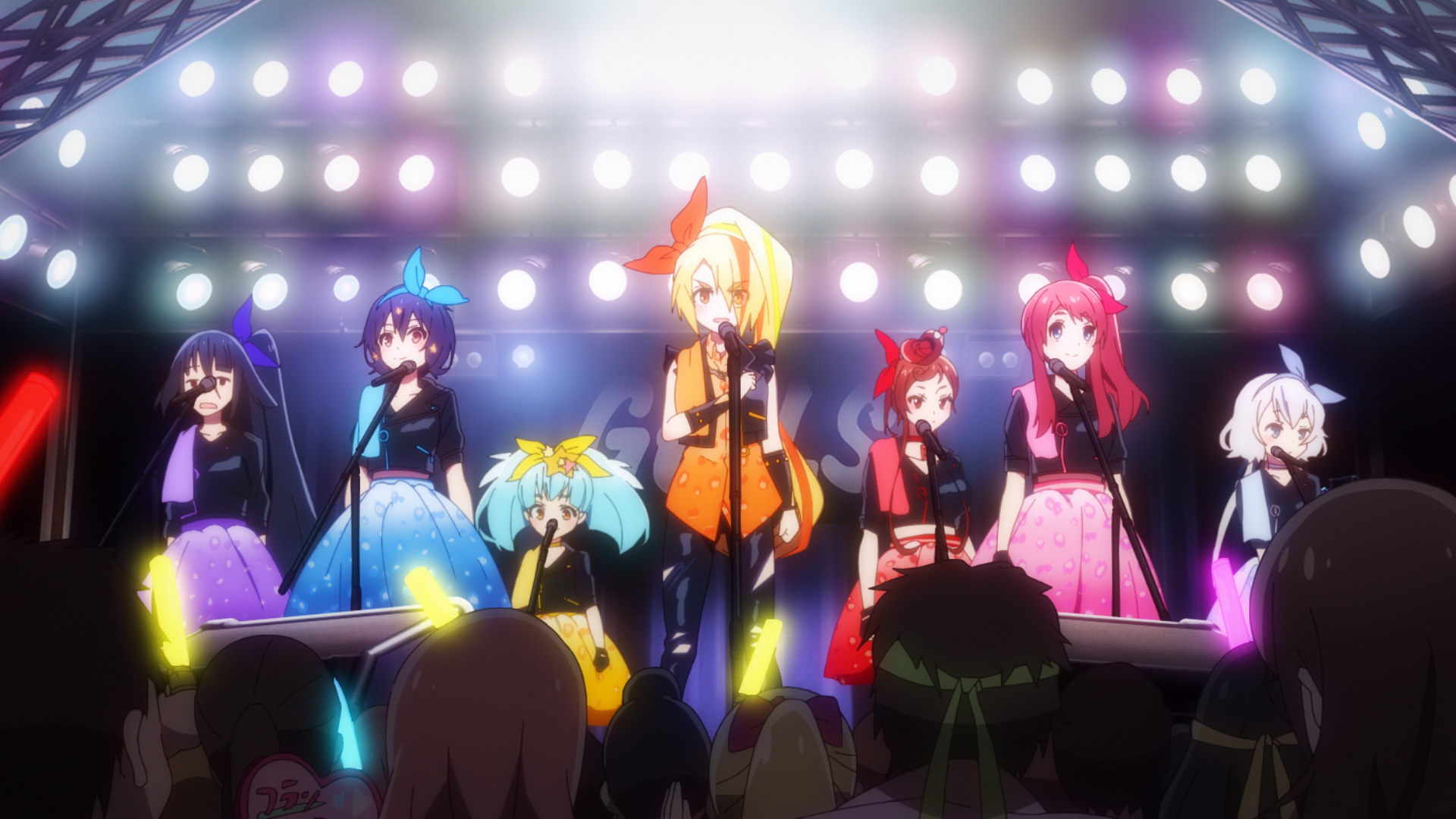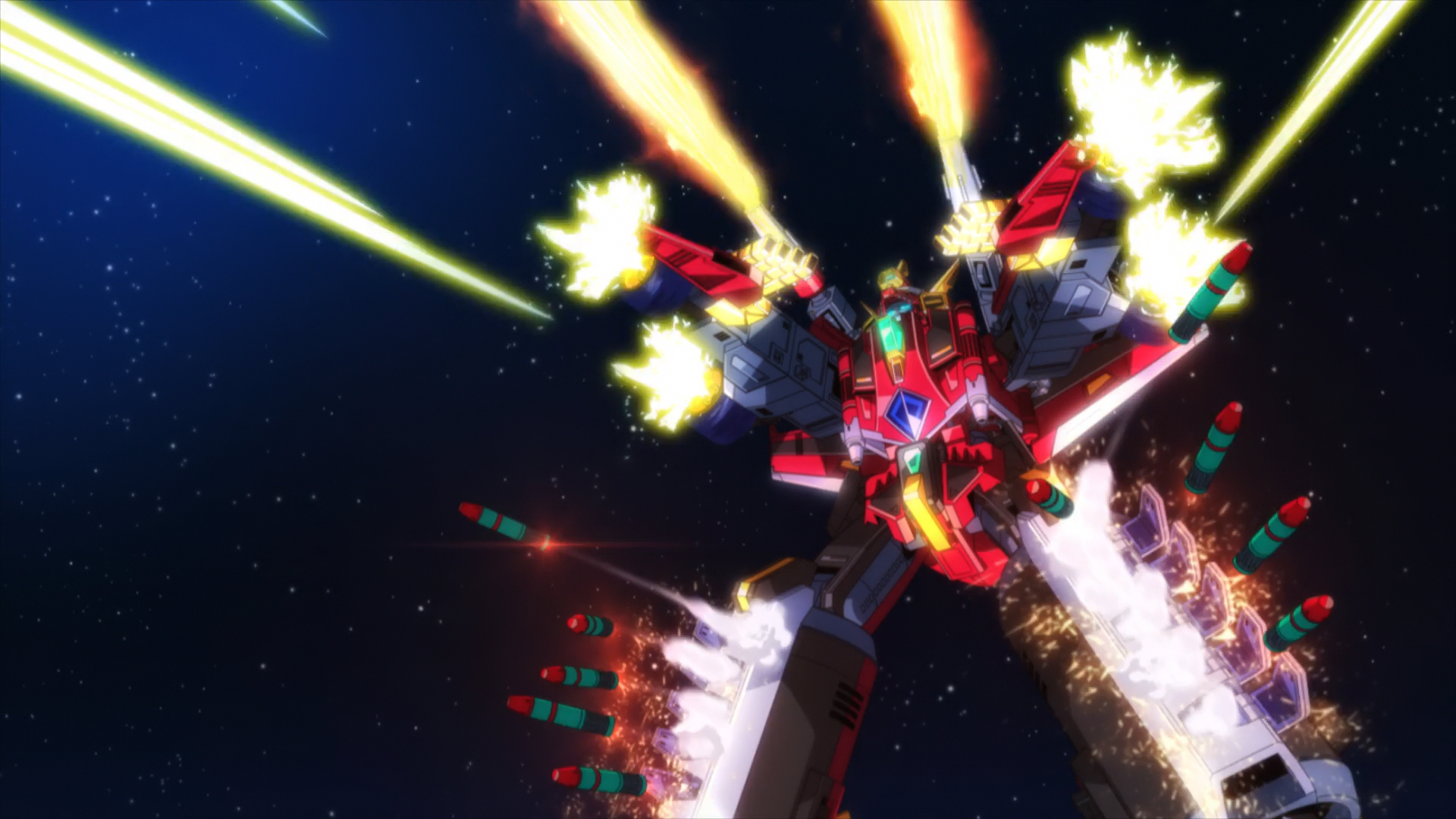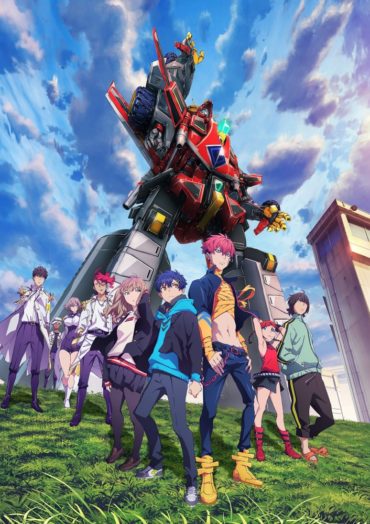Back For More – Spring Overview 2021 Part 2: Returning Series
My Hero Academia, Fruits Basket, SSSS Dynazenon, Zombie Land… Sequels, off-shoots, continuations, ongoing series still ongoing, both shojo and shonen, we’ve had the lot in Spring 2021 – and even though we haven’t yet managed to keep up with all of them (it’s been a busy season!) – the writers at Anime UK News are here again to share their thoughts.
Let us know your thoughts too… agree or disagree?
Cold Cobra
My Hero Academia’s Fifth Season has so far been on-form with previous seasons, both starting with a mostly filler-filled catch up episode and then adapting a story arc from the manga with little-to-no filler. The arc in question is often dubbed the “Joint Training Arc” and features the two superhero classes of UA School competing against each other in several 4 v 4 match ups. So basically a tournament arc with a twist, if only a minor one, in that it takes the form of five team fights with the class with the most wins out of five winning overall rather than a traditional 1-on-1 knockout format. Joining the two hero classes is Shinso, who is currently in general studies after failing to make the cut at the start of the year. He appeared in the story’s first tournament arc where he nearly beat our lead protagonist Midoriya by using his mind-controlling powers and it seems he’s added a few new skills to his arsenal in the intervening months. He is thrown on to one Class A team and one Class B team during the contest and it turns out it’s a test to see if he was worthy of being promoted up to the hero course. It’s a nice side story and I especially like that he is constantly made fun of at school for his power being more like that of a villain than a hero.

Alongside the admittedly well-animated and enjoyable action there are a few key points revolving around the mental growth of certain class members and, most importantly, a couple of deep dives into the history of the One For All power that Midoriya inherited from All Might at the very start of the series, shown through a couple of dream sequences. Without going into too much detail, they not only show a good portion of information about the power’s origin but also show that our lead protagonist is going to go through a fair few changes in the coming arcs…
Overall it’s a fun slice of shonen which not only provides a platform for some lesser featured characters to shine but also moves the core storyline on a bit. MHA’s high hit rate continues, even during a pretty standard storyline trope.
My Hero Academia is streaming on Crunchyroll and Funimation.
Onosume

I have continuously praised Zombie Land Saga as an incredibly unique and funny take on the idol genre, and that certainly isn’t going to stop after sitting through Zombie Land Saga Revenge, which proved to be just as good as its first season. Taking place after a disastrous live concert that gets Franchouchou and their manager Kotaro into a lot of debt, Revenge largely focuses on them getting back on their feet, but also dives into a lot of the mysteries and subplots set up in its first season. So, if you wanted to know just why Saga prefecture must be saved, and how this whole situation around zombies becoming idols came about, then your questions will be answered.
Meanwhile, there’s plenty of development for the cast of characters, with all of them showing incredible growth throughout the series, feeling that they’ve not only settled into their resurrected lives, but surpassed who they were when they were still alive. Ai is challenged by the current members of Iron Frill, Junko bonds with Kotaro’s guitar, Lily takes on a protégé child actor like herself, Saki meets her favourite radio presenter, Sakura inspires someone in the same way she felt inspired by Iron Frill before she died, Tae goes to the shops, and we also finally get Yugiri’s backstory which reveals she’s more involved with this entire affair than you first thought.
There’s just a wealth of content across these twelve episodes and it never stops for breath, making this one wild and exhilarating ride. The comedy is always on point, with the entire zombie setup still working terrifically well, as continuing gags from the first season still work, while there’s plenty of new ones that’ll have you roaring with laughter. The crux of a lot of this of course being Kotaro, with Mamoru Miyano’s delivery being outstanding as he not only nails the silly stuff, but the more serious lines too. The musical numbers also remain fantastic, with absolute bangers like “Nope!!!!”” and “Furious Survival”, and the catchy as heck, Scatman-inspired “Little Bodda Bope”.
With Revenge, Zombie Land Saga remains one of the most fun shows that I’ve ever seen and is definitely one of my firm favourites. While this does unfortunately come on the back of various reports about poor working conditions at MAPPA, it’s definitely a surprise that even with production at the studio being a mess they can still crank out something this good.

Studio Trigger’s SSSS.Gridman perfectly combined their eccentric animation style with fun tokusatsu kaiju battles in a very approachable package back when it aired in 2018. Although SSSS.Dynazenon is technically a follow-up set in the same universe but several years in the future, it has a very different approach from its predecessor. While there are still plenty of kaiju battles, this series is a lot more character-focused, following first year high schooler Yomogi Asanaka as he becomes involved with a shady-looking guy called Gauma who lives under a bridge. As kaiju begin to attack the city, Yomogi is dragged by Gauma into becoming one of the four pilots of the robot Dynazenon, along with his classmate and crush Yume Minami, and passing bystander Koyomi Yamanaka. The four reluctantly form a team to combat the Kaiju Eugenicists, four shady individuals who have the power to control the kaiju that appear and are using them to wreak destruction.
While Yomogi is our main point-of-view character, the series mainly uses the kaiju attacks to explore the characters’ problems and feelings, as he has to deal with his family situation surrounding his parents’ divorce, while Yume attempts to uncover the truth of her older sister’s death, Koyomi struggles to finally grow up and cast his NEET status aside, and his cousin Chise has to work up the courage to go back to school.
This stronger focus on the characters themselves results in the series feeling a bit of a slow burn and it’s a lot slower to get going than Gridman. There’s initially no clear objective or big bad guy to fight, as the kaiju are noted more as forces of nature, rather than being artificially created; and this makes the series feel a lot more unfocused and lacking compared to its predecessor, where you had Akane and Alexis driving the story forward. Yet, as you get deeper into the characters’ heads and the mystery around Gauma and who he is starts unravelling, it becomes a very rewarding series that moves its characters forward in pleasant and surprising ways.
The kaiju battles themselves are still fun to watch and are well animated as you would expect from a studio such as Trigger, with some great monster designs that enable them to crush the city under their feet and blast it to pieces with deadly laser beams and all sorts. Each episode slowly ramps up the danger level, eventually producing a very climactic final battle that not only looks good, but has a lot of meaning to the characters as well.
While I think I prefer SSSS.Gridman due to its more traditional and focused narrative, SSSS.Dynazenon was still amazingly good fun and poignant in the story it was trying to tell. While it does work standalone, I would recommend jumping into SSSS.Gridman first, so you can get to know the recurring themes and characters, then hop across to this for a tokusatsu series that carries a strong, positive life message.
Zombie Land Saga Revenge is streaming on Crunchyroll, while SSSS.Dynazenon is available on Funimation.
Sarah
Fruits Basket the Final
And this time it really is ‘the final’. After 13 more episodes, the anime of Natsumi Takaya’s shojo classic concludes with the same scene as the manga, set many years into the future for these beloved characters, causing many faithful readers to heave a contented (and relieved) sigh. But with the mangaka so heavily involved, this version was never going to stray far from the original – and it maintained the tension all the way through as the hold that Akito Soma has over the Soma clan and the spirits of the Twelve Zodiac creatures inhabiting their bodies gradually frays and breaks. The way that this happens – and eventually transforms our view of the ‘villain’ of Fruits Basket and the complex relationship linking Akito and the Zodiac animals – is very movingly portrayed. It’s also the final weeks of high school life for Tohru and her friends too, so there’s graduation looming and all that entails for the young people at the heart of the drama to come to terms with. Before that takes place, high drama rules as Akito leaves the Soma household, clutching a knife. (Which causes me to ask, Why on earth don’t the Soma retainers intervene and take the knife away from the distressed young woman?)

One of the underlying themes in Fruits Basket is the damage that parents can do to their children and Kyo’s father probably comes close to getting the award for the worst and most abusive parent of the whole Soma clan. The events of Kyo’s past – and present – are some of the most painful scenes to watch in the whole series and the team doesn’t flinch in animating them. And some of the most affecting scenes come in the later resolutions and new directions for Kyo; a box of tissues is a must in watching this series (I don’t think I managed a single episode without blubbing at one stage or another, although in some cases they were happy tears!) Apt performances again from Japanese and American voice casts bring the story and characters to vivid life, enhanced by a sympathetic music score by Masaru Yokoyama. I know I’ll be re-watching this and recommend it wholeheartedly to anyone looking for an engaging story threaded through with a convincing supernatural strand. Another plus: the announcement of a prequel anime coming soon, telling the story of Katsuya and Kyoko, Tohru’s parents.

Welcome to Demon School, Iruma-kun returns for a second season and continues to delight and amuse in equal quantities. Fourteen-year-old Iruma – sold by his feckless human parents to a demon lord who wanted a grandson – continues to find life at Babyls, the prestigious demon school is amazing (as long as no one discovers that he’s human). He has close friends (Asmodeus and Clara) and, even if all three are placed in the Misfits Class under the stern tutelage of the terrifying Kallego, Iruma’s enjoying all the bizarre challenges his new life has to offer. Including the first manifestation of his ‘evil’ phase, something, it turns out that every young demon experiences (puberty?). This series rarely has a dull moment and because it’s quietly been working at creating engaging characters (yes, even Clara), you’re rooting for everything to go right for Iruma. One of the best new characters introduced this season has to be terrifying teacher Balam (voiced by the ever-dependable Katsuyuki Konishi) whose subject is imaginary beings and who finds Iruma rather too interesting. Has he guessed Iruma’s secret?! Still highly recommended, especially if you’re looking for a fantasy feel-good series to lift your mood right now!


